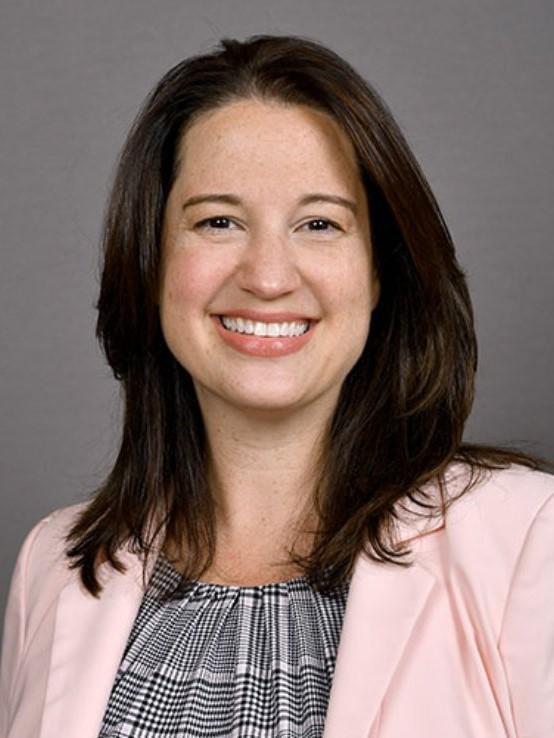Nursing young talent: Simulation lab leaders enhance student training

The Simulation and Clinical Performance Laboratory at Cizik School of Nursing uses advanced technology to enable students to practice a variety of clinical scenarios.
The chests of the manikins rise and fall as if breathing, and their pupils constrict and dilate. A pregnant manikin even mimics the act of labor, birthing a newborn manikin. The more realistic the technology and scenarios in the Simulation and Clinical Practice Lab at Cizik School of Nursing at UTHealth Houston, the more prepared nursing students become before moving into real health care settings.
“The Simulation Lab is where everything starts to make sense when it comes to nursing care,” says Vuong T. Prieto, PhD ’20, RN, the Simulation Education Faculty Director. “It’s where students apply what they have learned in the classroom.”
Prieto and Mandi Lyons, DNP ’19, APRN, who is the Standardized Patient Program Coordinator, hold newly created positions designed to help enhance students’ learning experiences and encourage educational innovation. As certified simulation health care educators, they are working toward securing the Sim Lab’s accreditation to ensure it delivers the most effective simulation education opportunities available.
“We are moving toward making the lab even more realistic than it is now,” Prieto says.
In addition to using manikins, the Sim Lab employs standardized patients—trained health care actors—who interact with students as actual patients would. These actors adapt their symptoms and reactions based on what students need to learn.
The Sim Lab has spaces that mimic hospital rooms, outpatient rooms, and even a home, enabling students to experience a wide variety of patient care scenarios.
“We have the ability to replicate any setting in the health care world here,” Lyons says. “We can provide consistency in training that wouldn’t be available otherwise. At a hospital, students follow nurses on their rounds, but those students do not necessarily see the same patients. If a faculty member wants all their students to learn how to do a home health exam, for example, they can come to the apartment setting we have created in the lab and all have the same experience.”
In the Sim Lab, faculty can teach students how to manage situations that they likely may not encounter during their clinical experience, ensuring they are fully prepared to care for all their future patients.

Vuong T. Prieto, PhD ’20, RN, serves as the Simulation Education Faculty Director and provides training for faculty and staff on simulation standards and best practices.
“Being a nurse means handling a lot of different demands at the same time,” Lyons adds. “You rarely treat patients one on one. You might have four to six patients calling you, and you need to prioritize and manage your time. Students can practice that here so they will be ready for real-world situations after they graduate.”
Training skilled nurses is especially important now with the current nursing shortage expected to grow, as 25% of nurses are within 10 years of retirement. The Texas Department of Health and Human Services anticipates a significant scarcity of nurses across the state by 2030.
Prieto and Lyons envision the lab expanding to serve more undergraduate and graduate students and offer new care scenarios, such as ambulance response. They also hope to one day include other UTHealth Houston schools in practice scenarios.
“Since professional nurses have to call physicians for assistance, we could collaborate with McGovern Medical School,” Prieto says. “Or we could work with dental and public health experts to make scenarios multidisciplinary, just like in the real world.”

Mandi Lyons, DNP ’19, APRN, serves as the Standardized Patient Program Coordinator and helps develop more realistic, authentic simulation experiences for students.
As Cizik School of Nursing graduates, Lyons and Prieto credit the school’s faculty with helping them achieve their success. “My teachers made a huge difference in my life, and I want to do that for my students now,” Lyons says.
Prieto also notes the role that the school’s donors play, citing past philanthropic support for the lab, including its major expansion in 2020.
Additional philanthropy could help replace manikins as they naturally wear out, upgrade other technology, or pay for the actors who pretend to be patients. Even minor purchases, such as wigs for the manikins, would increase the setting’s realism and help students learn.
“Without philanthropy, we wouldn’t be where we are today. The seeds other people plant with their generosity help us expand what we can do for our students,” Prieto says. “These students are the future nurses who will care for us in inpatient, outpatient, and community settings. We want them to be prepared and competent in their nursing practice.”